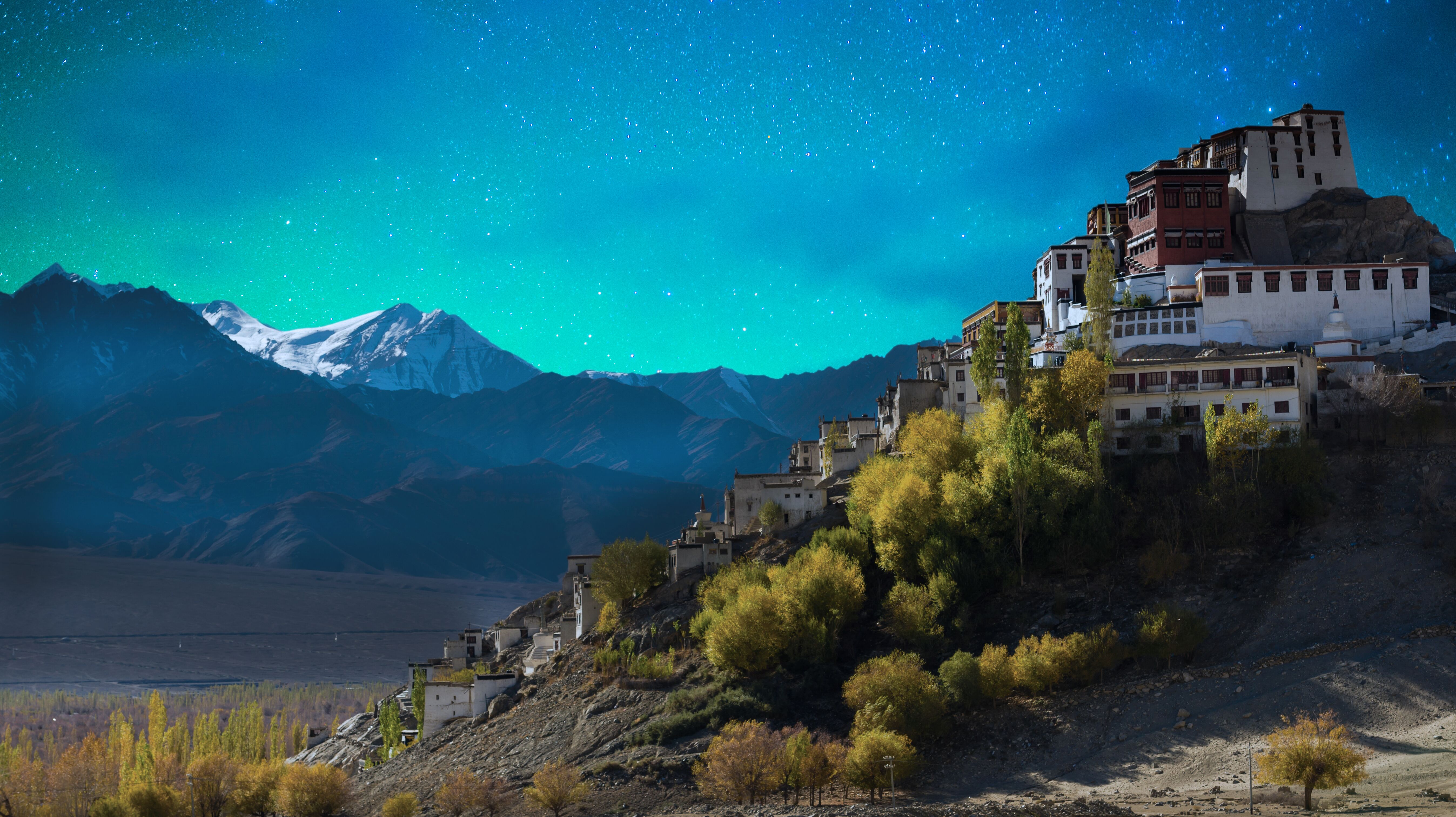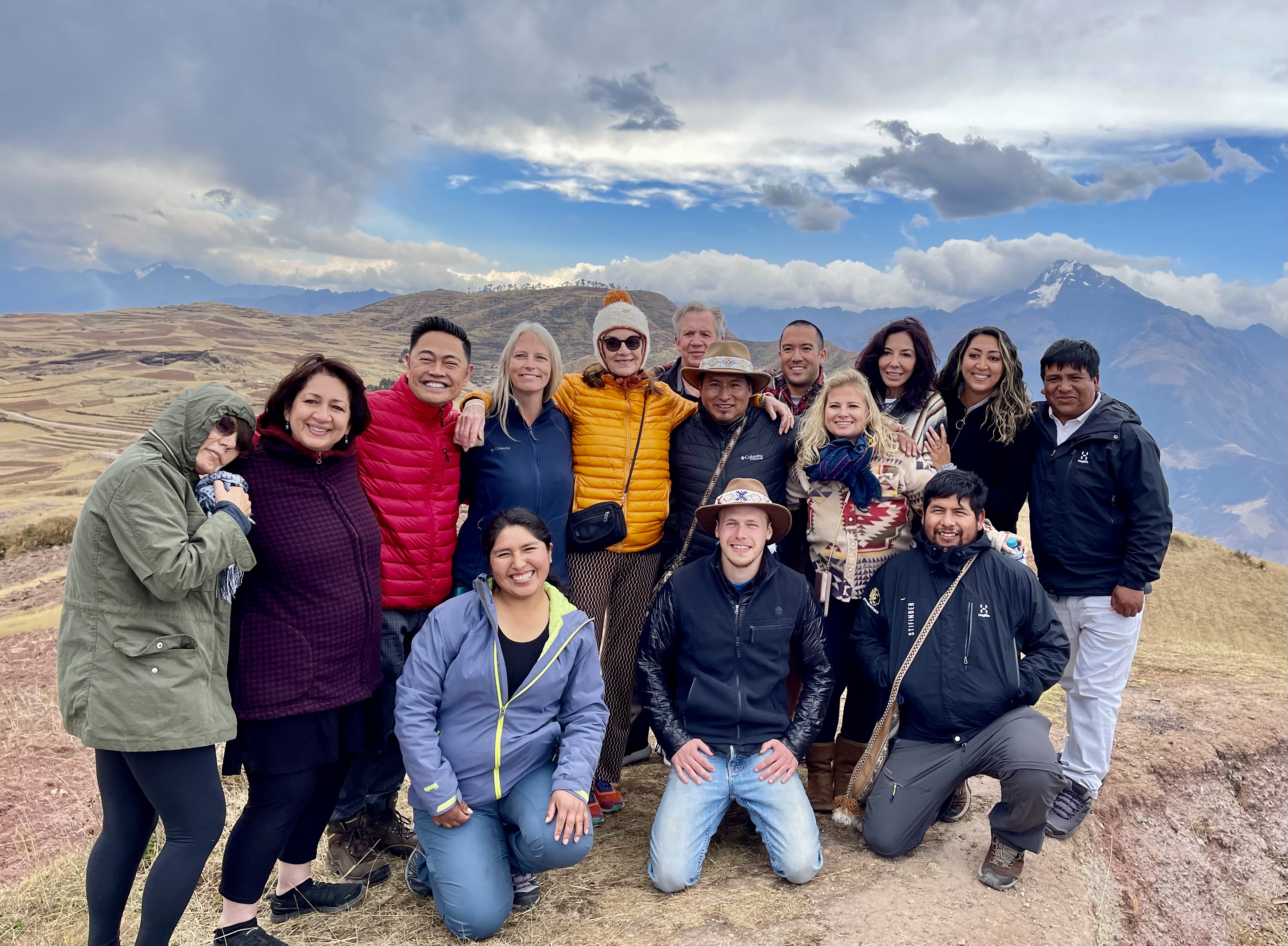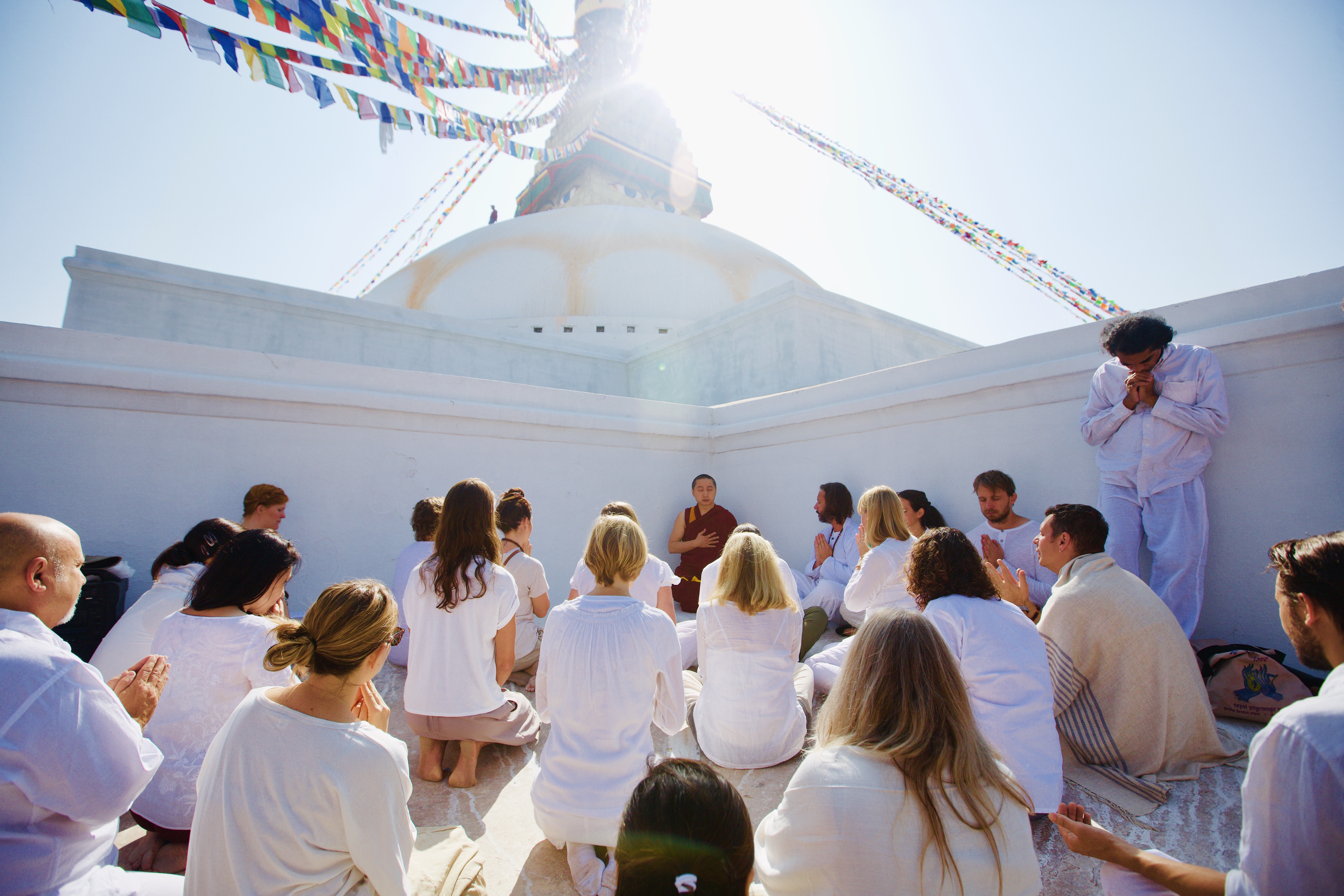
The Buddha made it clear during his lifetime that he and his teachings are simply the raft, not the shore. He wanted his followers to not indulge in idolization, but instead inner transformation. Nonetheless, he wished for his followers to visit the sites of the Buddha.
On his deathbed, the Buddha let his followers know that they’d collect plenty of merit if they visited these sites associated with the important breakthrough moments of his life. The sites are: where the Buddha was born, where the Buddha attained enlightenment, where the Buddha gave his first dharma talk, and lastly, where the Buddha passed from the Earthly realm. Due to this message, pilgrimage to these sacred sites has become an important part of Buddhist life.
We make a very thorough investigation of these sites on our journey to Nepal and India, Finding Buddha with Dr. Miles Neale and Special Guest Geshe Tenzin Zopa. On this journey of inner and outer discovery, participants visit the four holy sites of Lumbini, Kushinagar, Sarnath, and Bodhgaya to connect with the historical Buddha, make offerings, purify karma, and collect merit.
Throughout this journey, we guide and invite participants to go deeper into the seat of their own consciousness and to use the power of these four sacred Buddhist sites to explore and uncover enlightenment within their own lives.
In this article, it’s our intention to see deeply into these four sites to understand the power of visiting them and how they help us collect merit and purify karma.
Lumbini
Lumbini, in Nepal, has since 249 BCE been identified as the birthplace of the historical Buddha, Siddhartha Gautama. According to Buddhist texts, the Buddha’s mother meant to give birth to her son in her home city, Kapilavatsu.
Stopping to rest among gardens in Lumbini, she gave birth to the Buddha under a sal tree, a tree very much favored in Buddhist and Hindu traditions. The flowering of the sal tree eventually became symbolic with the nature of impermanence, a prominent theme in Buddhism.
Lumbini was designated a Unesco World Heritage Site as “the birthplace of the Lord Buddha.” The sacred area of Lumbini is one of the holiest and most significant places for one of the world’s great religions.
Lumbini has been a place of pilgrimage for students of Gautama Buddha for millennia. UNESCO shares more criteria for Lumbini’s designation:
“The archaeological remains of the Buddhist viharas (monasteries) and stupas (memorial shrines) from the 3rd century BC to the 15th century AD, provide important evidence about the nature of Buddhist pilgrimage centres from a very early period.”
Lumbini is a powerful site to visit because it embodies important events associated with early Buddhist history, and because it embodies the energy of birth and new beginnings, physically and perhaps into a tradition that aims at producing mindful lives and alleviating suffering for all.
On our journey with Dr. Miles Neale, Lumbini is a place where we contemplate the miracle of life, the Buddha’s miraculous birth, and the incredible fortune to be on pilgrimage together.
Bodhgaya
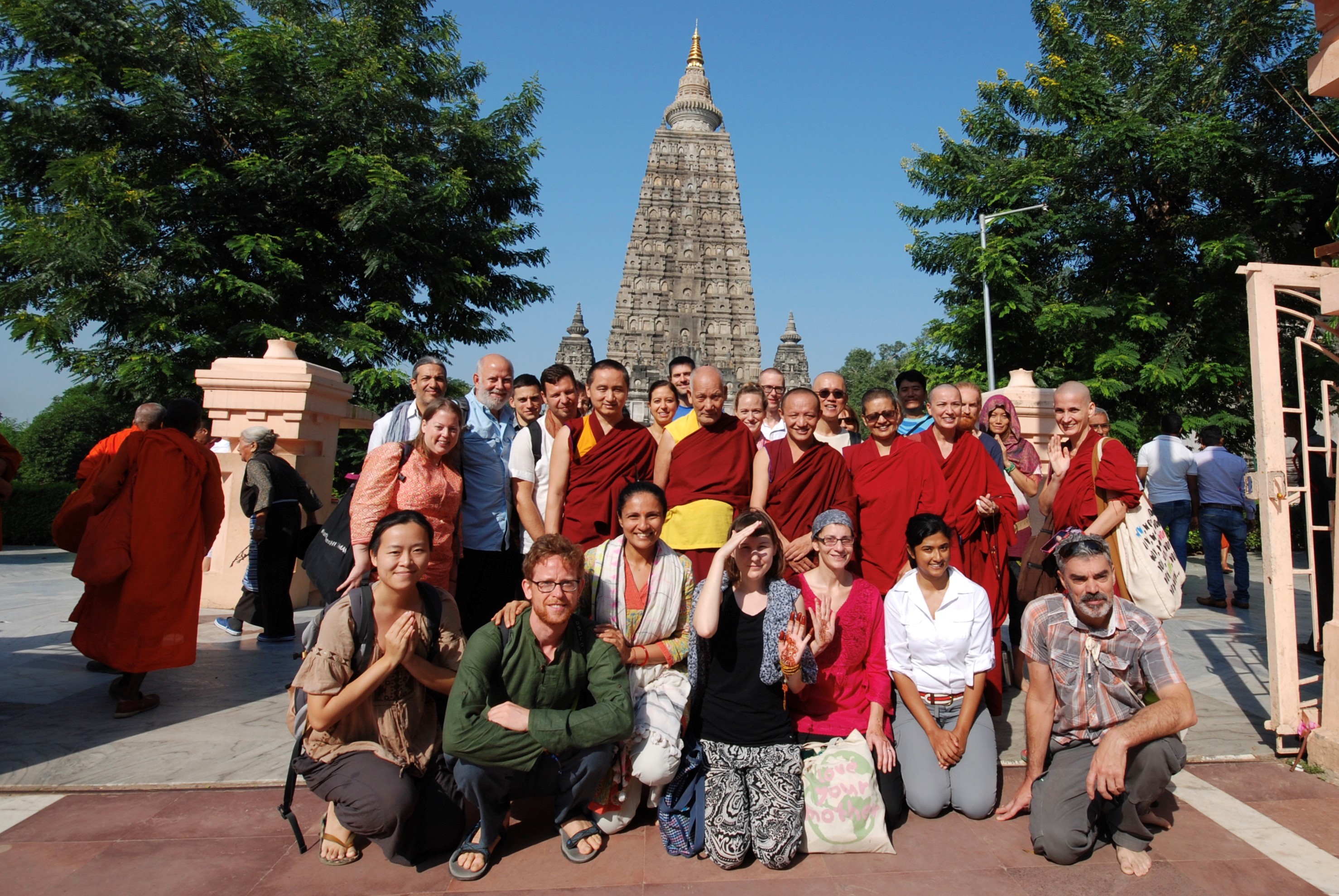
If Lumbini represents birth for those on the path, then perhaps Bodhgaya, in India, best represents the process of rebirth and the essence of transformation. This is where the Buddha attained enlightenment under the Bodhi Tree after practising and deepening his meditation practice for many years.
Perhaps the holiest site to visit in all of Buddhism, visiting Bodhgaya presents the pilgrim with the opportunity to experience the Mecca of Buddhism, and where the Buddha attained enlightenment.
While visiting this sacred site, Geshe Tenzin Zopa will lead a series of ancient ceremonies that invites us to deepen our own consciousness and connection to true oneness.
Sarnath
After obtaining enlightenment at Bodhgaya, the Buddha knew he had to share these learnings with the world to help ease the human suffering that he had witnessed. He gave his first sermon at the, now sacred, site of Sarnath in India. It is here where pilgrims from around the world celebrate his first teachings on the middle way to nirvana, ensuring the world had a roadmap for liberation.
Due to its mystical and serene settings, Sarnath allows pilgrims to meditate and ponder on the teachings of the Buddha and how these lessons can be used in their own life to deepen spiritual connection, peace, and oneness with all.
Kushinagar
Kushinagar is a pilgrimage site in Uttar Pradesh, India, where one appreciates and meditates on the Buddha’s passing into final release beyond the body known as parinirvarna.
It’s a place to contemplate our own precious human life and the imminence of death. Our morning meditation and ritual practices at this site invites participants to feel deep gratitude for their own life, and perhaps explore their purpose here on Earth, leading to a sense of peace and connection.
Visiting the Sites of the Buddha: A journey of profound transformation
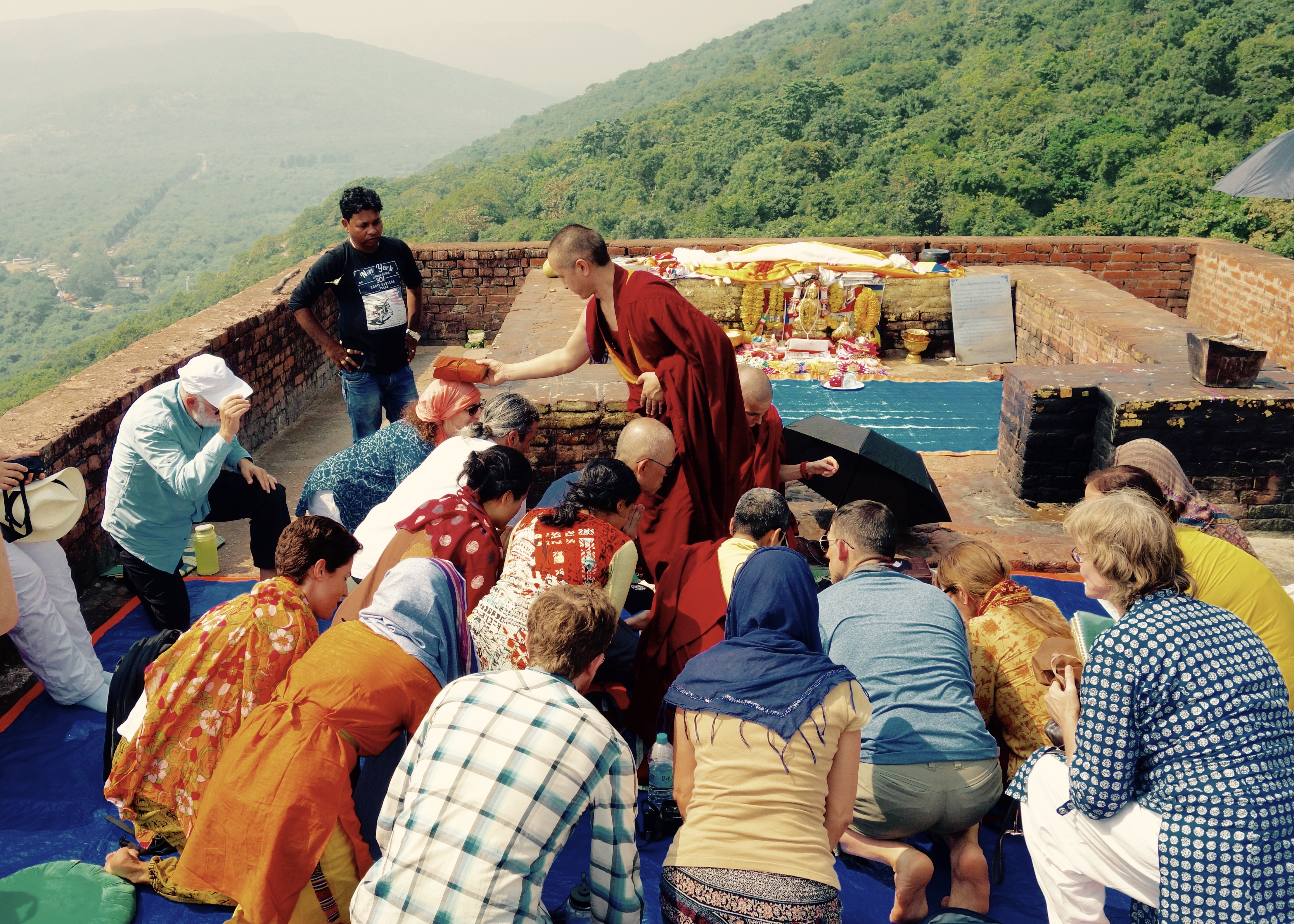
Buddhist have known for many centuries that visiting these four sacred sites can have a profound transformation on the lives of pilgrims for many reasons. The most obvious of these reasons is simply experiencing the sacred power held at these important sites can have an immeasurable effect on pilgrims’ lives.
While simply being at these sites can be life-changing, to truly undergo the powerful transformations available at these places, nothing can compare to engaging in regular prayer, meditation, and practice alongside fellow pilgrims led by experts in Buddhism, such as Dr. Miles Neale.
